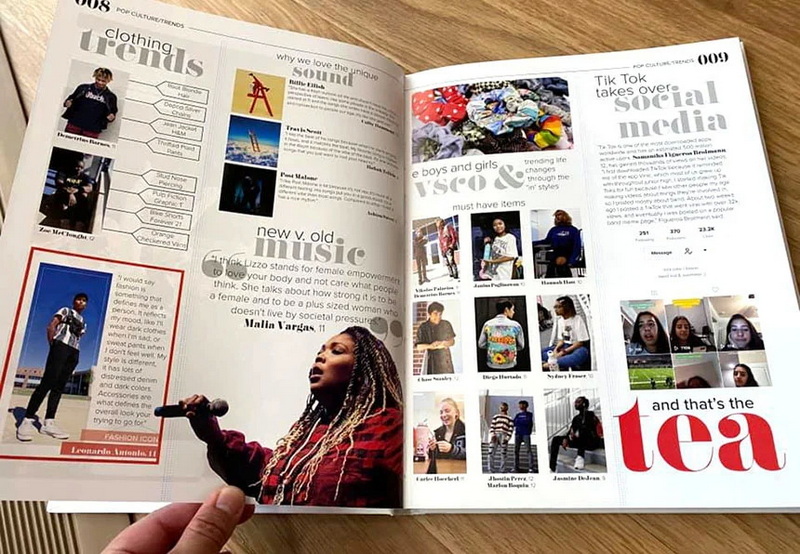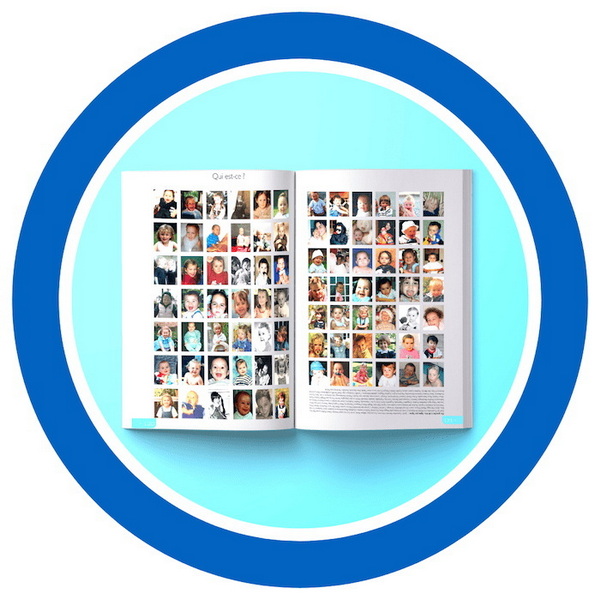Content Menu
● The Purpose of Yearbooks
● The Evolution of Yearbooks
● Components of a Yearbook
● The Importance of Yearbooks
● The Process of Creating a Yearbook
● Challenges in Yearbook Production
● Creative Themes for Yearbooks
● Photography Tips for Yearbook Success
● Yearbook Signing Tradition
● Conclusion
● Related Questions
>> 1. What types of questions should be included in a yearbook?
>> 2. How can schools encourage student participation in creating the yearbook?
>> 3. What are some creative themes for a school yearbook?
>> 4. How do digital yearbooks differ from traditional printed ones?
>> 5. Why are signatures important in a yearbook?
● Citations:
A yearbook is an annual publication that serves as a comprehensive record of a school year, capturing the essence of student life, significant events, and achievements through a combination of photographs and written content. It is more than just a collection of images; it is a tangible memory book that students can cherish for years to come. Yearbooks have evolved significantly over time, transitioning from simple scrapbooks to elaborate publications that document the unique experiences of each academic year.

The Purpose of Yearbooks
The primary purpose of a yearbook is to commemorate and preserve the memories of the school year. Here are some key aspects of its purpose:
- Capturing Memories: Yearbooks serve as a time capsule, documenting everything from academic achievements to social events, allowing students to look back and reminisce about their school days.
- Fostering Connections: They help maintain connections among classmates long after graduation, serving as a bridge for reunions and rekindling friendships.
- Historical Documentation: Yearbooks provide insights into the culture and history of a school during a specific time period, making them valuable resources for future generations.
- Recognition of Achievements: They often include sections that highlight individual and group accomplishments, boosting students' self-esteem and sense of belonging.
- Creating Traditions: The production and distribution of yearbooks have become cherished traditions in many schools, marking the end of an academic journey and celebrating the shared experiences of students.
The Evolution of Yearbooks
Yearbooks have a rich history that dates back several centuries. Initially, they were simple collections of mementos such as dried flowers and handwritten notes. The first official printed yearbook was created by Yale University in 1806, which included silhouettes of students and information about the school year. Over the years, yearbooks have transformed into comprehensive publications filled with photographs, stories, and reflections on the school year.
In the 20th century, particularly during the 1940s and 1950s, yearbooks became more standardized in format, often including sections for clubs, sports teams, and notable events. The advent of digital technology has further changed how yearbooks are produced and distributed. Today, schools can create digital versions alongside traditional printed copies, allowing for greater creativity and accessibility.
Components of a Yearbook
A well-crafted yearbook typically includes several key components:
- Student Portraits: Individual photographs of students are often featured prominently in the yearbook. These portraits serve as a visual reminder of classmates during their school years.
- Group Photos: Pictures of classes, clubs, sports teams, and other groups help capture the collective spirit and camaraderie among students.
- Event Coverage: Yearbooks document significant events such as graduations, proms, sports competitions, and school plays. These sections often include candid shots that reflect the excitement and emotions of those moments.
- Written Content: Alongside photos, written contributions from students may include quotes, anecdotes, reflections on their experiences, and messages from teachers or administrators.
- Artistic Elements: Many yearbooks feature creative designs and layouts that enhance the visual appeal. This can include themes that reflect the personality or culture of the student body.

The Importance of Yearbooks
Yearbooks hold significant importance in educational institutions for various reasons:
1. Preserving Memories: They capture memories that might otherwise fade over time. Students can look back at their yearbook years later to remember friendships, milestones, and experiences.
2. Building Community: By documenting school events and activities, yearbooks foster a sense of community among students. They celebrate diversity within the student body while highlighting shared experiences.
3. Encouraging Involvement: The process of creating a yearbook often involves collaboration among students and faculty. This encourages teamwork and fosters leadership skills among participants.
4. Supporting Personal Growth: Yearbooks allow students to reflect on their personal growth throughout the school year. They can see how they have changed from freshman to senior years.
5. Creating Keepsakes: Unlike digital images that may be lost or forgotten over time, printed yearbooks serve as physical keepsakes that can be treasured for decades.
The Process of Creating a Yearbook
Creating a yearbook is an extensive process that typically involves several stages:
- Planning: The first step involves forming a committee responsible for overseeing the production. This committee usually consists of students who will take on various roles such as writers, photographers, designers, and editors.
- Gathering Content: The committee collects photographs from various sources—students' submissions, event coverage by staff photographers—and gathers written contributions through interviews or surveys.
- Designing Layouts: Once content is collected, designers work on layouts that are visually appealing while ensuring that all necessary information is included.
- Editing: After layouts are created, editors review all content for accuracy and clarity before finalizing it for publication.
- Publishing: The completed design is sent to print or uploaded to digital platforms where it can be accessed by students and families.
Challenges in Yearbook Production
While creating a yearbook can be fulfilling, it also comes with challenges:
- Time Constraints: Producing a quality yearbook requires significant time management skills. Students must balance their responsibilities with academics while meeting deadlines.
- Budget Limitations: Schools may face budget constraints that limit their ability to produce high-quality publications or hire professional photographers.
- Participation Levels: Encouraging participation from all students can be difficult; some may feel shy about being photographed or sharing personal stories.
Creative Themes for Yearbooks
Choosing a theme for the yearbook can enhance its overall appeal and coherence. Here are some popular themes:
- A Journey Through Time: This theme can highlight how students have grown throughout their years at school.
- Underwater Adventure: A fun theme that allows for creative designs featuring aquatic elements.
- Around the World: This theme can celebrate diversity within the student body by showcasing different cultures.
- Retro Vibes: A nostalgic theme that incorporates elements from past decades.
- Sports Extravaganza: Focusing on athletic achievements while capturing team spirit through dynamic layouts.
These themes not only guide design choices but also help unify content throughout the publication.
Photography Tips for Yearbook Success
Photography plays a crucial role in capturing moments for inclusion in the yearbook. Here are some tips to ensure high-quality images:
- Tell a Story: Each photo should convey an emotion or narrative; candid shots often work best.
- Get Close: Focus on subjects without distractions in the background; close-ups can convey emotions effectively.
- Experiment with Angles: Different perspectives can add interest; try shooting from above or below eye level.
- Pay Attention to Details: Avoid cluttered backgrounds; ensure subjects are well-framed.
- Use High-Quality Equipment: Invest in good cameras or smartphones with high-resolution capabilities to enhance image quality.
Yearbook Signing Tradition
One cherished tradition associated with yearbooks is signing them at the end of the school year. This practice allows classmates to leave personal messages for one another:
- It fosters connections by encouraging students to express their feelings about shared experiences.
- Signing provides an opportunity for reflection on friendships formed during school years.
- Many people find joy in reading heartfelt notes years later when reminiscing about their school days.
Conclusion
In conclusion, yearbooks play an essential role in preserving memories and fostering connections within school communities. They serve as historical documents that capture not only individual achievements but also collective experiences that shape student life. As technology continues to evolve, so too will the ways in which these cherished publications are created and shared. However, their fundamental purpose—to celebrate youth and document growth—remains unchanged.
Yearbooks are more than just books; they are artifacts filled with stories waiting to be told again through laughter or tears as we flip through their pages decades later. They embody our journeys through education while reminding us how far we've come together as individuals within our communities.

Related Questions
1. What types of questions should be included in a yearbook?
Yearbook questions should encourage open-ended responses to elicit personal stories or reflections from students about their experiences throughout the school year. Examples include "What was your favorite memory this year?" or "Who had the biggest impact on you during your time at this school?"
2. How can schools encourage student participation in creating the yearbook?
Schools can encourage participation by promoting involvement through announcements or meetings at the start of each academic year. Offering incentives such as recognition or awards for contributions can also motivate students to participate actively.
3. What are some creative themes for a school yearbook?
Creative themes can range widely based on student interests but may include concepts like "A Journey Through Time," "Underwater Adventure," or "Around the World." Themes can guide design choices throughout the publication.
4. How do digital yearbooks differ from traditional printed ones?
Digital yearbooks offer interactive features such as videos or links to social media profiles but may lack the tactile experience associated with printed books. Printed versions provide physical keepsakes that can be cherished over time without concerns about technological obsolescence.
5. Why are signatures important in a yearbook?
Signatures provide personal messages from classmates that add sentimental value to each copy. They allow friends to express their thoughts about shared experiences while creating lasting memories associated with their peers during their school years.
Citations:
[1] https://www.remembermeyearbooks.com/blog/why-school-yearbooks-are-important
[2] https://yearbooklife.com/2023/07/11/history-of-school-yearbooks/
[3] https://blog.bookbaby.com/how-to-self-publish/book-design/how-to-make-a-yearbook
[4] https://www.memorybook.com/yearbook-design/yearbook-theme-concepts/coordinating-backgrounds/
[5] https://schools.lifetouch.com/blog-photo-tips/
[6] https://www.irvinsimon.com/blog/why-yearbooks-are-important-to-your-school-community/
[7] https://www2.inter-state.com/history-of-yearbooks/
[8] https://yearbooklife.com/2023/09/27/yearbook-layout-design-tips-and-tricks-for-creating-a-beautiful-and-cohesive-yearbook/
[9] https://schoolannual.com/2023/06/05/101-fun-yearbook-theme-ideas/
[10] https://www.linkedin.com/pulse/6-reasons-why-every-school-should-have-yearbook-fantastic
































